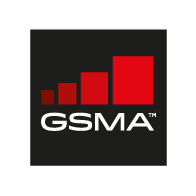NB-IoT and LTE-MTC.
Continued mobile industry commitment to the range of 3GPP-standards-based Low Power Wide Area (LPWA) technologies has been characterised by the dramatic growth in the number of networks supporting NB-IoT and LTE-MTC (LTE-M) networks, and the substantial growth in the number of Cat-NB1 and Cat-M1 compliant devices, as well as more recently, the release of chipsets and modules compliant with Rel-14 Cat-NB2. There are:
- 142 deployed/ launched NB-IoT or LTE-M networks, run by 114 operators.
- 153 operators actively investing in NB-IoT technology, up from 141 in April 2019, of which:
- 101 have deployed/commercially launched NB-IoT networks, up from 90 in six months.
- 29 are planning, piloting and/or deploying NB-IoT networks.
- 23 are evaluating/trialling NB-IoT technology.
- 65 operators actively investing in LTE-M technology, up from 60 in April, of which:
- 41 have deployed/commercially launched LTE-M networks, up from 34
- 13 are planning, piloting and/or deploying LTE-M networks
- 11 are trialling LTE-M technology.
Note that a technology is regarded as deployed when it has been installed in the operator’s commercial network, and it is intended to remain in use (a trial or pilot installation might be discontinued). A network is considered to be commercially launched once it is available at least on a limited basis for the use of commercial customers.
In terms of IoT equipment, GSA has identified:
- 303 devices in GAMBoD are identified as supporting either Cat-M1, Cat-NB1 (NB-IoT) or Cat-NB2; an increase of more than 50% since April 2019. Of these:
- 230 devices support Cat-NB1 (including known variants); 103 of them support Cat-NB1 only.
- Seven identified devices support Cat-NB2 (five of which also support Cat-M1 and six of which also support-Cat NB1).
- 198 devices support Cat-M1 (including known variants); 72 of them support Cat-M1 only.
- 60.4% are modules, 25.4% are asset trackers, and 5.6% are routers, with data loggers, femtocells, smart-home devices, and smart watches, USB modems, and vehicle on-board units (OBUs), making up the balance.
- 26 commercially available chipsets supporting either NB-IoT or Cat-M1.
The 3GPP IoT technologies NB-IoT and LTE-M are set to become the global dominant LPWA technologies that will enable huge IoT market growth.
©2019 GSA

